Note: There is now a newer Novel Coronavirus (COVID-19) Situation Report 74.
WHO Novel Coronavirus (COVID-19) Situation Report 73
- No new countries/territories/areas reported cases of COVID-19 in the past 24 hours.
- WHO has released a Medical Product Alert that warns consumers, healthcare professionals, and health authorities against a growing number of falsified medical products that claim to prevent, detect, treat or cure COVID-19. Find more here.
- WHO is working with Iraq to increase surveillance and response capacities. WHO has printed hundreds of thousands of prevention and transmission control messages, taken mobile health teams to the streets, and delivered urgent consignments of personal protective equipment (PPE) and laboratory test kits. More information can be found here.
- WHO has been working with governments and partners around the world, across many areas of activity: conducting needs assessments, providing hand sanitizers and masks for health professionals, providing training on the clinical management of patients with COVID-19, collaborating with local media outlets and conducting awareness raising activities, delivering test kits, conducting simulation exercises, and shipping personal protective equipment through WHO logistical hubs. As an example, WHO EURO has released a photo story of WHO’s activities in Kyrgyzstan, available here.
- Our understanding of the transmission of COVID-19 virus continues to improve with the evolution of the outbreak. For more, see ‘Subject in Focus’ below.
Risk Assessment
Global Level: Very High
Coronavirus Situation in Numbers
Globally
- 896,450 confirmed cases (72,839 new)
- 45,526 deaths (4,924 new)
Western Pacific Region
- 107,626 confirmed cases (1,204 new)
- 3,723 deaths (22 new)
European Region
- 503,006 confirmed cases (38,809 new)
- 33,604 deaths (3,515 new)
South-East Asia
- 5,324 confirmed cases (149 new)
- 216 deaths (21 new)
Eastern Mediterranean Region
- 58,168 confirmed cases (3,887 new)
- 3,280 deaths (165 new)
Regions of the Americas
- 216,912 confirmed cases (28,161 new)
- 4,565 deaths (1,165 new)
African Region
- 4,702 confirmed cases (629 new)
- 127 deaths (36 new)
Subject in Focus: The routes of transmission from COVID-19 patients
As the COVID-19 outbreak continues to evolve, we are learning more about this new virus every day. Here we summarize what has been reported about transmission of the COVID-19 virus, and provide a brief overview of available evidence on transmission from symptomatic, pre-symptomatic, and asymptomatic people infected with COVID-19.
Symptomatic transmission
By way of definition, a symptomatic COVID-19 case is a case who has developed signs and symptoms compatible with COVID-19 virus infection. Symptomatic transmission refers to transmission from a person while they are experiencing symptoms.
Data from published epidemiology and virologic studies provide evidence that COVID-19 is primarily transmitted from symptomatic people to others who are in close contact through respiratory droplets, by direct contact with infected persons, or by contact with contaminated objects and surfaces.1-7 This is supported by detailed experiences shared by technical partners via WHO global expert networks, and reports and presentations by Ministries of Health.
Data from clinical and virologic studies that have collected repeated biological samples from confirmed patients provide evidence that shedding of the COVID-19 virus is highest in upper respiratory tract (nose and throat) early in the course of the disease.8-11 That is, within the first 3 days from onset of symptoms.10-11 Preliminary data suggests that people may be more contagious around the time of symptom onset as compared to later on in the disease.
Pre-symptomatic transmission
The incubation period for COVID-19, which is the time between exposure to the virus(becoming infected) and symptom onset, is on average 5-6 days, however can be up to 14 days. During this period, also known as the “pre-symptomatic” period, some infected persons can be contagious. Therefore, transmission from a pre-symptomatic case can occur before symptom onset.
In a small number of case reports and studies, pre-symptomatic transmission has been documented through contact tracing efforts and enhanced investigation of clusters of confirmed cases.12-17 This is supported by data suggesting that some people can test positive for COVID-19 from 1-3 days before they develop symptoms.6,16 Thus, it is possible that people infected with COVID-19 could transmit the virus before significant symptoms develop. It is important to recognize that pre-symptomatic transmission still requires the virus to be spread via infectious droplets or through touching contaminated surfaces.
Asymptomatic transmission
An asymptomatic laboratory-confirmed case is a person infected with COVID-19 who does not develop symptoms. Asymptomatic transmission refers to transmission of the virus from a person, who does not develop symptoms.
There are few reports of laboratory-confirmed cases who are truly asymptomatic, and to date, there has been no documented asymptomatic transmission. This does not exclude the possibility that it may occur. Asymptomatic cases have been reported as part of contact tracing efforts in some countries.
WHO regularly monitors all emerging evidence about this critical topic and will provide an update as more information becomes available.
Selected references
- Liu J, Liao X, Qian S et al. Community transmission of severe acute respiratory syndrome coronavirus 2, Shenzhen, China, 2020. Emerg Infect Dis 2020 DOI: 10.3201/eid2606.200239
- Chan J, Yuan S, Kok K et al. A familial cluster of pneumonia associated with the 2019 novel coronavirus indicating person-to-person transmission: a study of a family cluster. Lancet 2020 DOI: 10.1016/S0140-6736(20)30154-9
- Li Q, Guan X, Wu P, et al. Early transmission dynamics in Wuhan, China, of novel coronavirus-infected pneumonia. N Engl J Med 2020; DOI: 10.1056/NEJMoa2001316
- Huang C, Wang Y, Li X, et al. Clinical features of patients infected with 2019 novel coronavirus in Wuhan, China. Lancet 2020; 395: 497–506.
- Burke RM, Midgley CM, Dratch A, Fenstersheib M, Haupt T, Holshue M,et al. Active monitoring of persons exposed to patients with confirmed COVID-19 —United States, January–February 2020. MMWR Morb Mortal Wkly Rep. 2020 DOI: 10.15585/mmwr.mm6909e1
- World Health Organization. Report of the WHO-China Joint Mission on Coronavirus Disease 2019 (COVID-19) 16-24 February 2020 [Internet]. Geneva: World Health Organization; 2020 Available from: https://www.who.int/docs/default-source/coronaviruse/who-china-joint-mission-on-covid-19-final-report.pdf
- Ong SW, Tan YK, Chia PY, Lee TH, Ng OT, Wong MS, et al. Air, surface environmental, and personal protective equipment contamination by severe acute respiratory syndrome coronavirus 2 (SARS-CoV-2) from a symptomatic patient. JAMA. 2020 Mar 4 [Epub ahead of print].
- Wang W, Xu Y, Ruqin G, et al. Detection of SARS-CoV-2 in Different Types of Clinical Specimens. JAMA 2020 DOI: 10.1001/jama.2020.3786
- Lauer SA, Grantz KH, Bi Q et al. The Incubation Period of Coronavirus Disease 2019 (COVID-19) From Publicly Reported Confirmed Cases: Estimation and Application. Ann Intern Med 2020 DOI: 10.7326/M20-0504
- Liu Y, Yan LM, Wan L et al. Viral dynamics in mild and severe cases of CVOID-19. Lancet Infect Dis DOI: 10.1016/S1473-3099(20)30232-2
- Wolfel R, Corman V, Guggemos W et al Virological assessment of hospitalized cases of coronavirus disease 2019. DOI: 10.1101/2020.03.05.20030502
- Yu P, Zhu J, Zhang Z, Han Y. A familial cluster of infection associated with the 2019 novel coronavirus indicating possible person-to-person transmission during the incubation period. J Infect 2020 DOI: 10.1093/jiaa077
- Huang R, Xia J, Chen Y, Shan C, Wu C. A family cluster of SARS-CoV-2 infection involving 11 patients in Nanjing, China Lancet Infect Dis 2020 DOI: 10.1016/ S1473-3099(20)30147-X
- Pan X, Chen D, Xia Y et al. Asymptomatic cases in a family cluster with SARS-CoV-2 infection. Lancet Infect Dis 2020 DOI: 10.1016/S1473-3099(20)30114-6
- Tong Z-D, Tang A, Li K-F, Li P, Wang H-L, Yi J-P, et al. Potential presymptomatic transmission of SARS-CoV-2, Zhejiang Province, China, 2020. Emerg Infect Dis. 2020 DOI: 10.3201/eid2605.200198
- Wei WE, Li Z, Chiew CJ, Yong SE, et al. Presymptomatic Transmission of SARS-CoV-2 —Singapore, January 23–March 16, 2020. MMWR, 1 April 2020/69.17.
- Kimball A, Hatfield KM, Arons M, James A, et al. Asymptomatic and Presymptomatic SARS-CoV-2 Infections in Residents of a Long-Term Care Skilled Nursing Facility —King County, Washington, March 2020. MMWR, 3 April 2020, 69(13);377–381
Countries, territories or areas with reported laboratory-confirmed COVID-19 cases and deaths, April 2, 2020
| Country/Territory/Area | Confirmed Cases |
|---|---|
| United States of America | 187302 |
| Italy | 110574 |
| Spain | 102136 |
| China | 82724 |
| Germany | 73522 |
| France | 56261 |
| Iran | 47593 |
| United Kingdom | 29478 |
| Switzerland | 17070 |
| Turkey | 15679 |
| Belgium | 13964 |
| Netherlands | 13614 |
| Austria | 10711 |
| Republic of Korea | 9976 |
| Canada | 9005 |
| Portugal | 8251 |
| Brazil | 5717 |
| Israel | 5591 |
| Australia | 4976 |
| Sweden | 4947 |
| Norway | 4665 |
| Czechia | 3589 |
| Ireland | 3447 |
| Denmark | 3107 |
| Chile | 3031 |
| Malaysia | 2908 |
| Russian Federation | 2777 |
| Poland | 2554 |
| Romania | 2460 |
| Ecuador | 2372 |
| Japan | 2384 |
| Luxembourg | 2319 |
| Philippines | 2311 |
| Pakistan | 2291 |
| Thailand | 1771 |
| Saudi Arabia | 1720 |
| Indonesia | 1677 |
| India | 1636 |
| Finland | 1446 |
| South Africa | 1380 |
| Greece | 1375 |
| Peru | 1323 |
| Dominican Republic | 1284 |
| Iceland | 1220 |
| Mexico | 1215 |
| Panama | 1181 |
| Serbia | 1060 |
| Argentina | 1054 |
| Singapore | 1000 |
| Croatia | 963 |
| Colombia | 906 |
| Algeria | 847 |
| Slovenia | 841 |
| Qatar | 835 |
| United Arab Emirates | 814 |
| Ukraine | 804 |
| Egypt | 779 |
| Estonia | 779 |
| Iraq | 728 |
| New Zealand | 723 |
| International (Diamond Princess Cruise Ship) | 712 |
| Morocco | 676 |
| Lithuania | 581 |
| Armenia | 571 |
| Bahrain | 569 |
| Hungary | 525 |
| Lebanon | 479 |
| Bosnia and Herzegovina | 464 |
| Latvia | 446 |
| Republic of Moldova | 423 |
| Tunisia | 423 |
| Bulgaria | 422 |
| Slovakia | 400 |
| Andorra | 396 |
| Kazakhstan | 386 |
| Azerbaijan | 359 |
| North Macedonia | 354 |
| Costa Rica | 347 |
| Uruguay | 338 |
| Cyprus | 320 |
| Kuwait | 317 |
| Puerto Rico | 286 |
| Réunion | 281 |
| Jordan | 278 |
| Albania | 277 |
| Burkina Faso | 261 |
| San Marino | 236 |
| Afghanistan | 235 |
| Oman | 231 |
| Vietnam | 218 |
| Cuba | 212 |
| Ghana | 195 |
| Belarus | 192 |
| Côte d’Ivoire | 190 |
| Senegal | 190 |
| Uzbekistan | 190 |
| Malta | 188 |
| Faroe Islands | 173 |
| Honduras | 172 |
| Mauritius | 154 |
| Sri Lanka | 143 |
| Venezuela | 143 |
| Cameroon | 139 |
| Nigeria | 139 |
| Palestinian Territory | 134 |
| Brunei Darussalam | 131 |
| Martinique | 128 |
| Guadeloupe | 125 |
| Kosovo | 125 |
| Democratic Republic of the Congo | 123 |
| Georgia | 121 |
| Montenegro | 120 |
| Mayotte | 116 |
| Bolivia | 115 |
| Kyrgyzstan | 115 |
| Cambodia | 109 |
| Trinidad and Tobago | 89 |
| Rwanda | 82 |
| Jersey | 81 |
| Kenya | 81 |
| Guernsey | 78 |
| Gibraltar | 69 |
| Guam | 77 |
| Niger | 74 |
| Liechtenstein | 72 |
| Paraguay | 69 |
| Isle of Man | 65 |
| Aruba | 55 |
| Bangladesh | 54 |
| Madagascar | 53 |
| French Guiana | 51 |
| Uganda | 44 |
| Guatemala | 39 |
| Jamaica | 38 |
| French Polynesia | 37 |
| Monaco | 37 |
| Togo | 36 |
| Zambia | 36 |
| Djibouti | 34 |
| Barbados | 33 |
| Bermuda | 32 |
| El Salvador | 32 |
| Guinea | 30 |
| United States Virgin Islands | 30 |
| Mali | 28 |
| Ethiopia | 26 |
| Congo | 22 |
| Saint Martin | 21 |
| United Republic of Tanzania | 20 |
| Guyana | 19 |
| Maldives | 18 |
| Haiti | 16 |
| New Caledonia | 16 |
| Myanmar | 15 |
| Bahamas | 15 |
| Eritrea | 15 |
| Cayman Islands | 14 |
| Equatorial Guinea | 14 |
| Mongolia | 14 |
| Benin | 13 |
| Saint Lucia | 13 |
| Curaçao | 11 |
| Dominica | 11 |
| Namibia | 11 |
| Greenland | 10 |
| Lao People’s Democratic Republic | 10 |
| Libya | 10 |
| Mozambique | 10 |
| Seychelles | 10 |
| Syrian Arab Republic | 10 |
| Eswatini | 9 |
| Grenada | 9 |
| Guinea-Bissau | 9 |
| Angola | 8 |
| Central African Republic | 8 |
| Saint Kitts and Nevis | 8 |
| Suriname | 8 |
| Zimbabwe | 8 |
| Antigua and Barbuda | 7 |
| Chad | 7 |
| Gabon | 7 |
| Sudan | 7 |
| Holy See | 6 |
| Liberia | 6 |
| Northern Mariana Islands | 6 |
| Saint Barthelemy | 6 |
| Sint Maarten | 6 |
| Cabo Verde | 5 |
| Fiji | 5 |
| Mauritania | 5 |
| Montserrat | 5 |
| Nepal | 5 |
| Nicaragua | 5 |
| Somalia | 5 |
| Turks and Caicos | 5 |
| Bhutan | 4 |
| Belize | 3 |
| Botswana | 3 |
| British Virgin Islands | 3 |
| Gambia | 3 |
| Anguilla | 2 |
| Burundi | 2 |
| Sierra Leone | 2 |
| Papua New Guinea | 1 |
| Saint Vincent and the Grenadines | 1 |
| Timor-Leste | 1 |
| Total | 896450 |
Recommendations and Advice for the Public
If you are not in an area where COVID-19 is spreading or have not traveled from an area where COVID-19 is spreading or have not been in contact with an infected patient, your risk of infection is low. It is understandable that you may feel anxious about the outbreak. Get the facts from reliable sources to help you accurately determine your risks so that you can take reasonable precautions (see Frequently Asked Questions). Seek guidance from WHO, your healthcare provider, your national public health authority or your employer for accurate information on COVID-19 and whether COVID-19 is circulating where you live. It is important to be informed of the situation and take appropriate measures to protect yourself and your family (see Protection measures for everyone).
If you are in an area where there are cases of COVID-19 you need to take the risk of infection seriously. Follow the advice of WHO and guidance issued by national and local health authorities. For most people, COVID-19 infection will cause mild illness however, it can make some people very ill and, in some people, it can be fatal. Older people, and those with pre-existing medical conditions (such as cardiovascular disease, chronic respiratory disease or diabetes) are at risk for severe disease (See Protection measures for persons who are in or have recently visited (past 14 days) areas where COVID-19 is spreading).

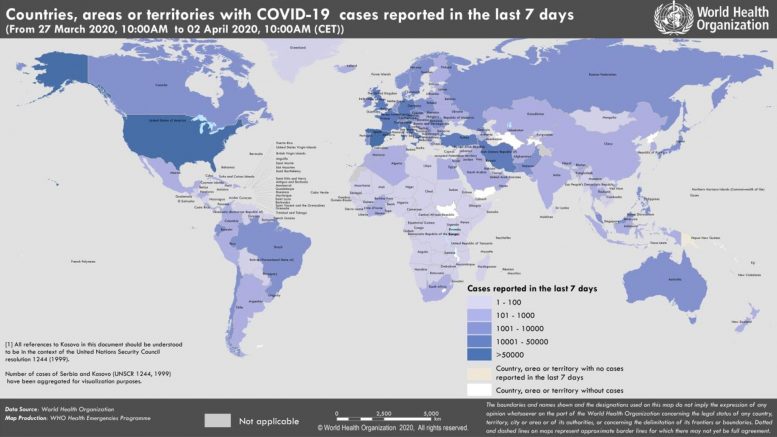
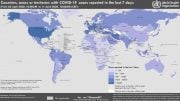
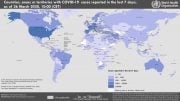
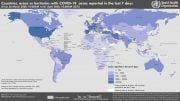
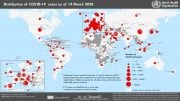
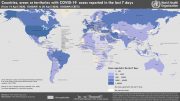
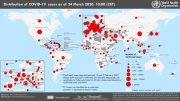
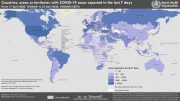
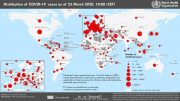
We are making a big deal of this, If we had 3 million death that’s not big enough to shut down the world like we have. Maybe we should pull all cars off the road (1.25 million death’s a year), or stop all people from eating sugar (1.6 million die each year) , or make people stop smoking?(kills 7 million each year) or lets just frick out on this Covid 19 and cost the world 10 trillion dollers…..we have gone to far
Joe…include people dead from pollution in the world is staggering per year around 4.2 million.
شكرا